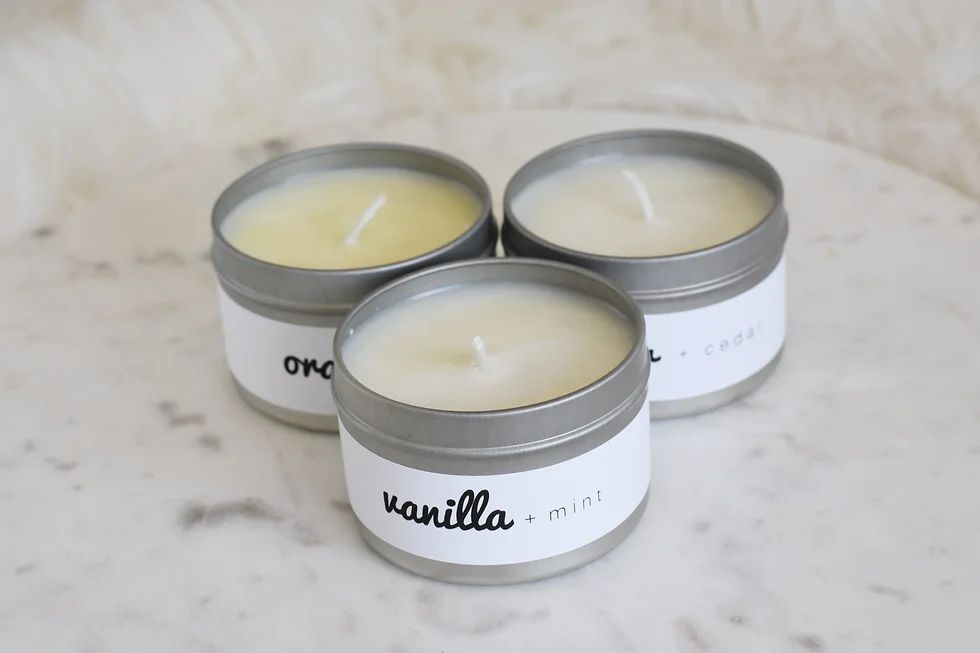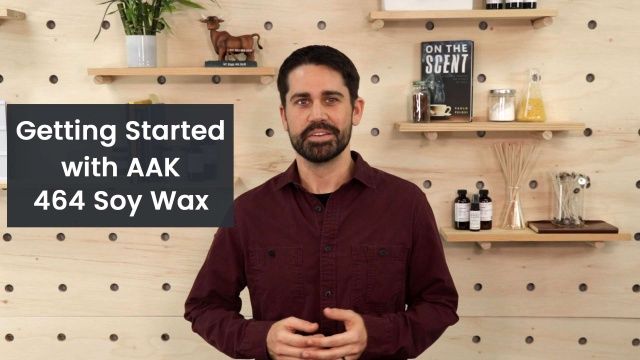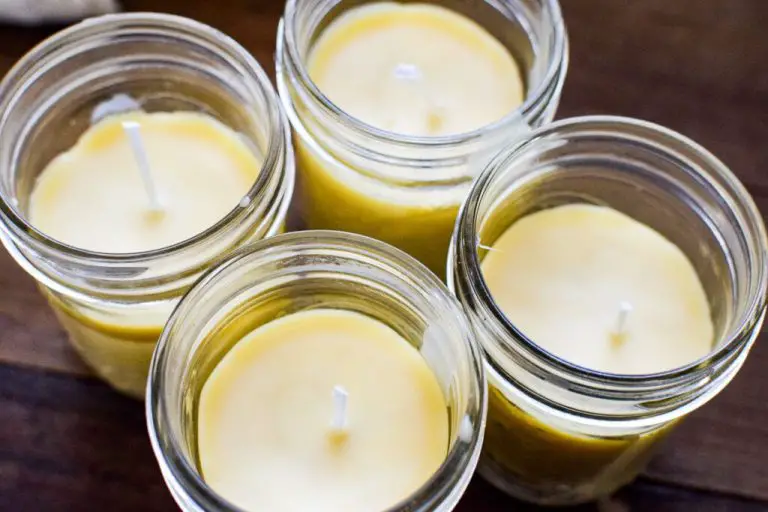Can A Candle Be 100% Soy Wax?
What is Soy Wax?
Soy wax is a type of vegetable wax made from hydrogenated soybean oil. It was developed in the 1990s as an alternative to paraffin wax, which is a petroleum byproduct. According to CandleScience, “After harvesting, the beans are cleaned, cracked, de-hulled, and rolled into flakes before undergoing a chemical process called hydrogenation to make them into a solid wax.” (https://www.candlescience.com/learning/what-is-soy-wax/)
One of the main benefits of soy wax is that it is made from a renewable resource, whereas paraffin wax is not sustainable long-term. Soy wax is also biodegradable and burns cleaner than paraffin. Many candle makers switched to using soy wax because it is considered a more eco-friendly and natural option compared to petroleum-based waxes.
Soy wax has a lower melting point than paraffin, which allows it to melt at a relatively low temperature. This makes soy wax easy to work with for candle making, but it also means soy candles must be burned at lower temperatures to avoid faster melting.
Benefits of Soy Wax Candles
Soy wax has several benefits that make it a popular choice for candle making. One of the main benefits is that soy wax burns longer than paraffin wax. According to The Candle Studio, soy wax candles burn up to 50% longer than paraffin candles (The Candle Studio, 2019). This is because soy wax has a lower melting point than paraffin, so it liquefies more slowly as the candle burns.
Additionally, soy wax has a lower melting point than paraffin, so it does not release potentially harmful chemicals into the air while burning. Paraffin wax releases compounds like toluene and benzene at high temperatures, while soy wax does not release these chemicals (Wax Poetic Candle Bar, 2021). This makes soy wax a cleaner-burning and less toxic option.
Finally, soy wax is a renewable and environmentally-friendly resource, since it is made from soybeans. Paraffin wax, on the other hand, is made from petroleum, which is a non-renewable resource. Using soy wax reduces the demand for petroleum-based products.
Overall, the benefits of longer burn times, lower toxicity, and renewability make soy wax a popular eco-friendly choice for candle making (The Candle Studio, 2019).
Sources:
The Candle Studio. (2019, August 6). Why Choose A Soy Wax Candle – The Benefits of Soy Wax. https://thecandlestudio.com/blog/why-choose-a-soy-wax-candle-the-benefits-of-soy-wax
Wax Poetic Candle Bar. (2021, March 11). Why Choose Soy Wax?. https://www.waxpoeticcandlebar.com/blog/why-soy-wax
Can a Candle be 100% Soy Wax?

Most soy wax candles contain some paraffin or other additives. Paraffin helps make the wax stronger and more stable, while additives can enhance scent throw or make coloring easier. However, paraffin and other petroleum-based ingredients produce more soot and are not considered as natural. Calyan Wax Co. notes that 100% soy wax can be brittle and prone to frosting.
Some manufacturers claim to make 100% soy candles. Brands like Emz Blendz advertise their candles as having zero paraffin and 100% cotton wicks. To achieve this, they use high quality soy wax with proprietary blending and specialized wicks. Testing the wax melting point can help verify purity. The benefit of 100% soy is a cleaner, soot-free burn. However, extra care is required to prevent frosting and maintain scent throw compared to soy-paraffin blends.
In summary, it is possible to make candles that are 100% soy wax without any paraffin or additives. But extra steps may be required to enhance the soy wax’s stability and burning properties. The result can be a natural, non-toxic candle when high-grade ingredients are used.
Making 100% Soy Wax Candles
Making candles that are 100% soy wax is possible, but can be tricky. Soy wax is made from hydrogenated soybean oil, and in its pure form can be quite brittle and prone to cracking. To make high quality 100% soy candles, it’s important to use the right wax and additives:
Use high quality, fully hydrogenated soy wax. Golden Brands 415 soy wax is a premium soy wax made specifically for candles. Its molecular structure has been fully hydrogenated, making it harder and more stable than partially hydrogenated soy waxes.
Add 5-10% vybar or other oil for flexibility. Vybar is a proprietary additive from Golden Brands that makes soy wax more pliable. Adding around 10% vybar improves soy wax’s ability to adhere to containers and reduces brittleness. Other oils like coconut oil can also be used.
Single pour candles hold up better than containers. Multiple thin pours lead to weak spots in the wax crystal structure. Doing a single thick pour results in a stronger candle that resists cracking and holds its shape better.
Properly wicked candles are less prone to issues. Pairing the right soy wax and proper wicking ensures complete wax pool liquefaction and reduces soot that weakens wax.
With care and the right additives, it’s possible for crafters to make high quality candles from 100% soy wax. The natural crystals and flexibility of soy wax make it ideal for container candles.
Testing Soy Wax Purity
When buying soy wax candles, it’s important to verify that the wax is 100% soybean wax and free of additives. Here are some tips for testing purity:
Look for certification from reputable third parties. Organizations like the National Candle Association have standards for what can be labeled as soy wax. Reputable candle makers will have their products certified (source).
Check ingredients for additives like paraffin or petroleum-based oils. Pure soy wax should only contain hydrogenated soybean oil. Be wary of any extra ingredients (source).
Contact the manufacturer for verification. Reputable candle makers should be transparent about their ingredients and processes. Ask for their certification documents or lab testing results (source).
Performing these checks helps ensure the soy wax meets purity standards and lives up to quality claims. Burn testing and checking for proper soy scent can provide further verification.
Soy Wax vs. Beeswax
Soy wax and beeswax are two popular natural wax options for candle making. Beeswax comes directly from honey bees and has been used for centuries to make candles. Soy wax is a vegetable-based wax made from soybeans (https://selfmadecandle.com/blogs/candles/soy-wax-vs-beeswax). There are some key differences between these two types of wax:
Beeswax is more expensive than soy wax. Beeswax can cost 2-3 times as much as soy wax. The high cost of beeswax is due to the labor-intensive process of collecting honeycomb and processing it into wax (https://www.candlesbyluma.com/blogs/news/soy-candles-vs-beeswax-candles).
Beeswax candles tend to burn longer than soy candles. Beeswax has a higher melting point which allows it to burn slower and resist melting in warmer environments (https://selfmadecandle.com/blogs/candles/soy-wax-vs-beeswax). Soy wax can soften and bend more easily in heat.
Soy wax is vegan, while beeswax is an animal product. Vegans and vegetarians often prefer soy-based candles over beeswax. Soy wax provides a cruelty-free alternative to beeswax (https://www.candlesbyluma.com/blogs/news/soy-candles-vs-beeswax-candles).
Making Soy Container Candles
Soy wax does not adhere as strongly to container walls as paraffin wax, so it’s important to use thicker walled containers for stability when making soy container candles (How to Make Soy Container Candles, 2022). Glass and tin containers with thicker walls provide the best support.
Adding more vybar or other oil, around 1⁄2 teaspoon per pound of wax, will help improve the flexibility and adhesion of the soy wax. Thoroughly mixing the soy wax, vybar, and other ingredients for 3-5 minutes ensures everything is fully incorporated (How to Make Soy Container Candles, 2022).
Allowing adequate cooling time before removing soy candles from the mold is also crucial. Soy wax shrinks more than paraffin as it cools, so letting the candles rest for at least 24 hours provides time for the wax to pull away from the container walls. Rushing the process risks cracking or crumbling.
Wick Selection for Soy Candles
Choosing the right wick is crucial for soy candles to burn properly. Since soy wax has a lower melting point than paraffin, it requires a larger wick to prevent “drowning” where the wax melts too fast around the wick (1). Paper-cored wicks with a cotton or wood exterior tend to work best for soy wax because they retain more stiffness when the wax melts (2). The general guideline is to use a wick approximately 1/4 inch smaller than the diameter of the candle, but testing different wick sizes is recommended to find the optimal fit (3). The wick must be large and sturdy enough to keep the melt pool consistent without generating excess soot or getting snuffed out.
Sources:
(1) https://lonestarcandlesupply.com/guide-to-wicking/
(2) https://northwoodcandlesupply.com/blogs/news/how-to-choose-the-right-candle-wick-for-your-wax
(3) https://sojourncompany.com/blog/how-to-choose-a-wick-for-soy-candles/
Storing and Burning Soy Candles
Proper storage and burning are important for getting the most out of your soy candles. Soy wax can be sensitive to heat and light which can cause the candle to lose its shape or have morphing issues over time. To prevent this, it’s best to store soy candles in a cool, dry place away from direct light or heat sources (source). Keep soy candles in an area with a stable temperature around 60-72°F.
Before lighting a soy candle, it’s recommended to trim the wick to 1/4 inch to prevent smoking issues. Always burn soy candles in a draft-free area and keep them away from flammables. Allow the wax pool to completely liquefy across the top before extinguishing the flame. In general, soy candles have a burn time of 60-80 hours if stored and burned properly (source). With the right care, soy candles can provide an enjoyable and safe experience.
Conclusion
100% soy wax candles are indeed possible to manufacture with the proper techniques and quality control. When shopping for 100% soy candles, look for third party certification and verification from the manufacturer that their soy wax contains no paraffin or other additives. Reputable candle makers who specialize in soy will be transparent about their ingredients and manufacturing processes.
To achieve the best results when making your own 100% soy container candles, follow proper soy wax blending and pouring techniques. Pay close attention to wick selection, wicked candle jars properly, and allow adequate cure time before burning. With care taken during the soy candle making process, you can create long-lasting, clean-burning candles from 100% natural soy wax.
While 100% soy wax candles are attainable, some candle makers may blend small amounts of other waxes to modify the burn properties. When shopping for soy candles, look for manufacturers who are upfront about their ingredients so you can find the purest soy wax products. With transparency from candle makers and proper soy wax candle making methods, 100% soy wax candles can be a clean-burning, eco-friendly option.




